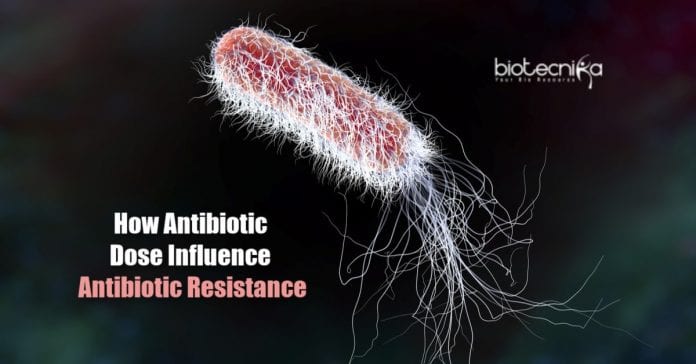Antibiotics And Emergence Of Antibiotic Resistance In Bacteria
Human health is facing a major threat globally called the Antibiotic Resistance. By 2050, around 10 million people might die every year from such resistant infections. It is important to understand how the use of antibiotics can lead to the emergence of resistance to treatment, as antibiotics are important in many areas of medicine.
Moderate doses of antibiotics prevent the emergence of antibiotic resistance, discovered researchers from the University of Oxford’s Department of Zoology. The resistant cells are harmed on antibiotic exposure, which limits the possibility of establishing successful populations by individual resistant cells. The findings were published in PNAS, which brought two major insights:
- Large doses of antibiotics are supposed to treat bacterial infections very aggressively. But the new study suggests that using more moderate doses of antibiotics could minimize the side-effects of aggressive antibiotic treatments and could prevent the emergence of antibiotic resistance during the treatment.
- The importance of studying the impacts of antibiotics on bacterial cells is highlighted by the study. To understand how antibiotic exposure influences the emergence of resistance, it is necessary to understand the impact of antibiotics on individual cells.
The scientists were trying to figure
out how the dosage of antibiotics influenced the emergence of antibiotic resistance in bacteria, said Prof. Craig MacLean, lead author of the study at the University of Oxford. Although many scientists had studied this previously, MacLean and the team approached the problem with a unique perspective that involved studying the emergence of resistant bacterial populations from individual cells.The ability of individual antibiotic-resistant cells to establish successful populations were measured using large-scale experiments. This allowed them to study how the antibiotics affected the growth and death of individual cells and ow the emergence of resistant populations were restricted by antibiotics.
Since the bacteria were too small, the work was challenging, said Prof. Craig MacLean. But surprisingly, they were able to come up with two major implications. First, they found that individual resistant cells experienced harmful effects even when low doses of antibiotics were used. Second, they saw high variability in the response of individual cells to antibiotics and how the growth of bacterial populations is influenced by this.
Scientists hope that the new study will lead to future clinical studies to determine how antibiotic dose affects antibiotic resistance. The current study examined bacteria in isolation, but in reality, pathogenic bacteria exist in more complex communities like the gut microbiome. So scientists are planning to study how antibiotics influence the emergence of antibiotic resistance in such communities.
































